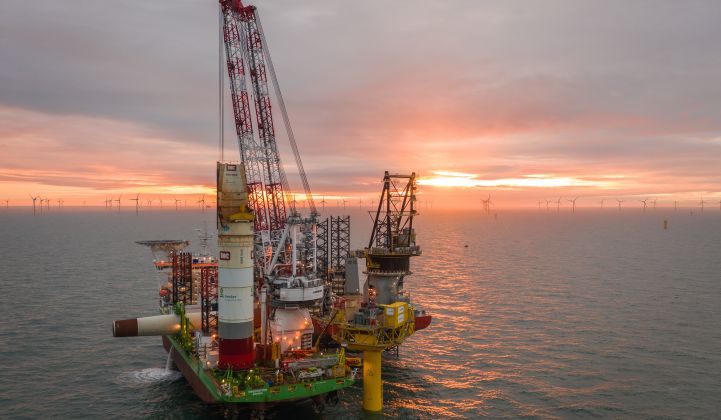Today around 5 percent of global offshore oil and gas wellhead production is used as fuel to power offshore production platforms.
However, using wellhead production to power operations reduces sales volumes and increases the carbon footprint of operations, which in turn poses a potential tax burden for the oil and gas companies in the future.
This creates a business case for big oil to power production operations with renewables, and some companies are beginning to explore it.
Approximately 16 terawatt-hours per year is used to power offshore oil and gas platforms globally, roughly equivalent to Croatia’s entire annual domestic electricity consumption. Wood Mackenzie finds that this is a material opportunity for renewables.
Three approaches
While powering offshore oil and gas production platforms with renewables makes sense, there are some places where this will work better than others.
Where developments lie close to the coastline, renewables onshore could be used to power oil and gas platforms. Powering platforms from shore is already used for some operations near the coast.
In Norway, projects such as Johan Sverdrup and the Utsira High ring demonstrate what is possible with renewables from shore.
However, Norway is in a unique position as its principal domestic power source is hydroelectric and many platforms are accessible from land.
Another approach is securing power from existing offshore sources.
In some places, offshore wind and upstream oil developments overlap. In time, as those offshore wind operators look to new markets, providing power to these platforms could be a viable source of long-term supply agreements.
An oil and gas platform operator could cut its electricity bill by half in switching to clean energy via this approach, according to a recent Wood Mackenzie insight on the topic.
The last approach would be in-situ renewables, developed specifically to service offshore platforms.
Equinor’s Hywind Tampen project, on which a final investment decision was made in October 2019, is an early example of this approach. The project will include an 88-megawatt floating wind farm between the Gullfaks and Snorre platforms, which will provide 35 percent of the platform's power demand.
Beyond wind turbines, floating solar has potential. Floating solar doesn’t require scale to reach a commercial threshold and can operate in any water depth. Airborne wind (i.e., flying kites) is another potential option, although it is a nascent technology.
Staying investible
Offshore electrification would provide various operational benefits at field level for oil and gas companies and put more production back into the sales pipeline.
Additionally, Wood Mackenzie expects carbon taxes to become more prevalent in the coming years. At Wood Mackenzie’s base case carbon price of USD $40 per ton, the 200 million tons of CO2 the offshore industry produces from power generation will cost the oil and gas industry around $8 billion a year in taxes. If carbon taxes are higher, this number will go up.
Using renewables to power platforms would mitigate the carbon footprint of offshore oil and gas operations and the associated costs for operating companies.
***
Malcolm Forbes-Cable is Vice President of Upstream Consulting at Wood Mackenzie and author of the complimentary research insight, Why Power Oil and Gas Platforms With Renewable Energy?




